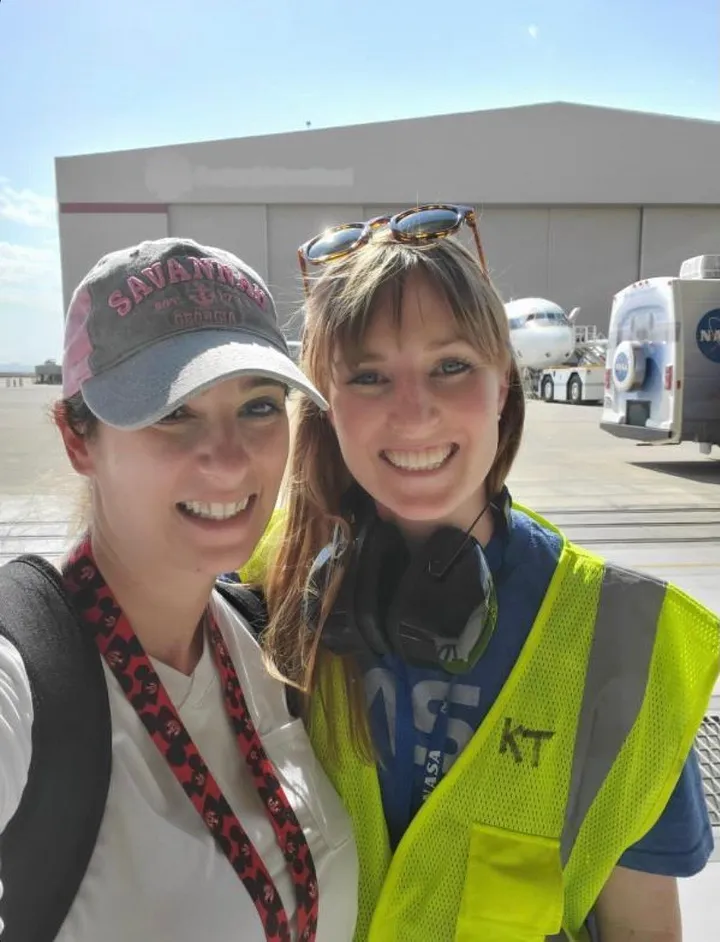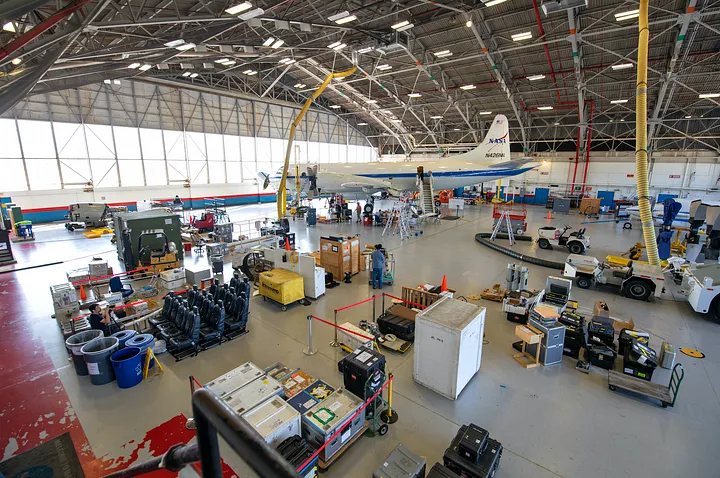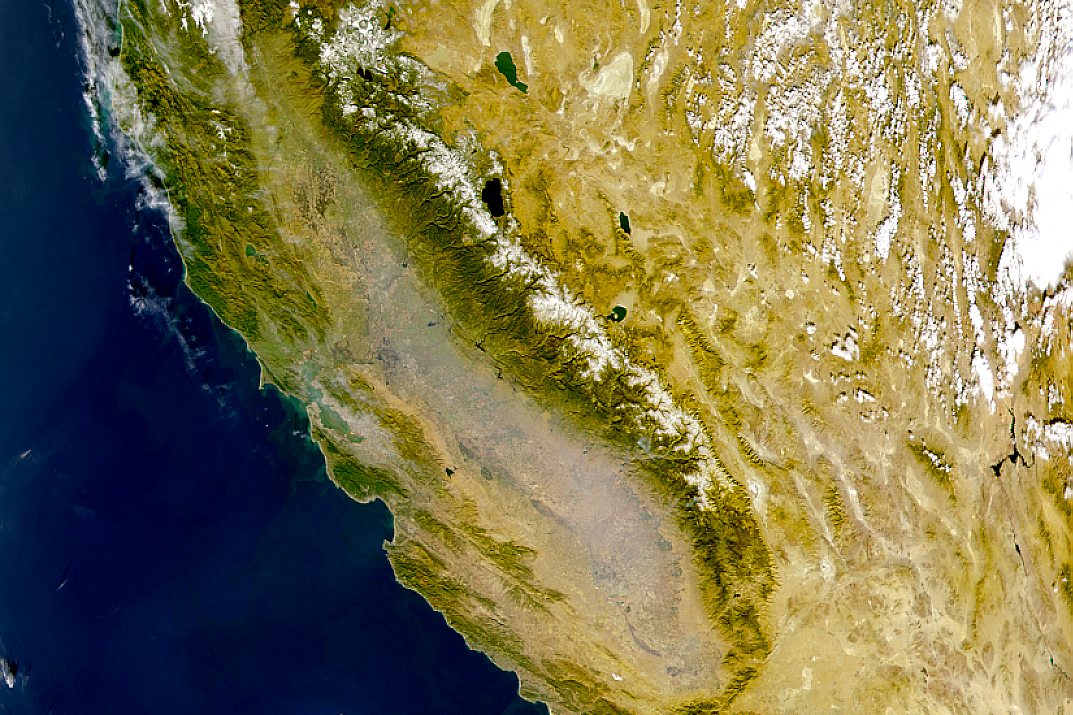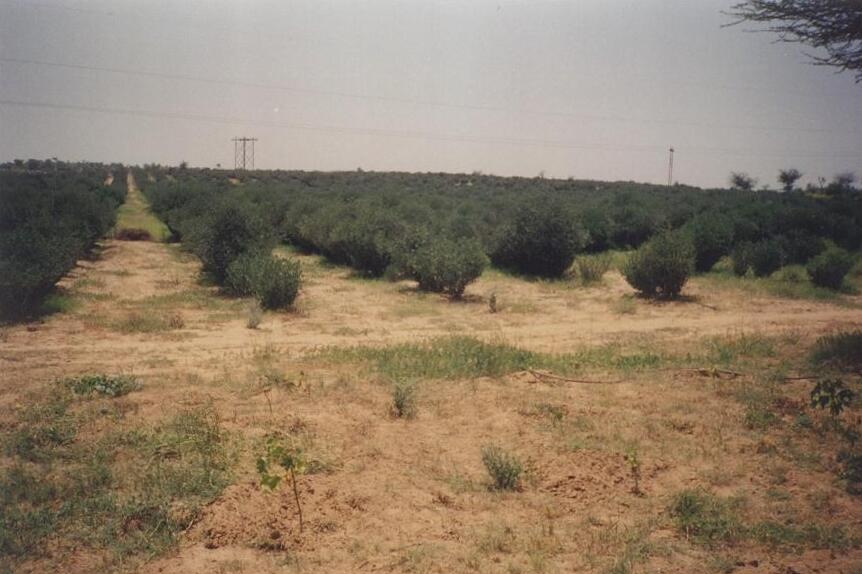BAERI’s Emma Yates is part of a small group of research scientists who look at…
The people helping make Earth Science research possible
In this episode we speak with two team members of NASA’s Earth Science Project Office (ESPO), and learn about the essential, behind the scenes work they’re doing to help scientists get out into the field and collect the data they need to better understand our planet.
Listen here or on Apple Podcasts, Audible, Soundcloud, Spotify, or Google Podcasts.
This transcript has been lightly edited for clarity.
ERIN: This is For the Love of Science, a podcast from the Bay Area Environmental Research Institute. In this show we hear directly from the Institute’s scientists, engineers, and mission specialists about the groundbreaking research they’re doing right now in earth, environmental, and space sciences, and learn about what their work can teach us about our Earth and our universe.
I’m Erin Bregman. In this episode I talk to Katie Stern and Sommer Nicholas from NASA’s Earth Science Project Office. We talk about the essential, behind-the-scenes work they’re doing to help scientists get out into the field and collect the data they need to better understand our planet.
KATIE: Hi, I’m Katie Stern, I’m a deputy project manager for the Earth Science Project Office, located at NASA Ames. I’ve been with the team now for two and a half years and it’s been quite a whirlwind in the best sense.
Most of my work revolves around assisting the scientists to make sure that their campaigns are successful. And that can be anything from working with the instrument teams to make sure that their upload onto aircraft goes smoothly, even booking hotel rooms so that the group, whenever we travel, is all together, to figuring out what our needs are from an Internet perspective. There’s a lot of small pieces that all have to come together, and I do work hand in hand with Sommer to help make sure we have all of the logistical pieces too. So, if Sommer wants to introduce herself as well?
SOMMER: Yeah, thanks Katie. My name is Sommer Nicholas. I’ve been with ESPO, or the Earth Science Project Office, for about six years now, I believe. I’m a deputy project manager like Katie, but I also do logistics. Basically what that entails is ordering gases, or cryogens, for instrument teams for their use in the field. And a lot of what ESPO does is field project management for NASA’s Earth science missions. We do a lot of airborne science focused missions. But as I was mentioning a few minutes ago, we actually just got back from the UK where we were supporting an ocean biology project. So we do branch out and support other sort of missions within the Earth Science Directorate.
Our main goal, I would say, in ESPO, is just to kind of really take care of the logistics of these various field campaigns so that the scientists can really focus on the science. So like Katie said, whether it’s setting up hotel room blocks so they can just kind of make their hotel reservations with ease, or, you know, shipping various equipment to and from locations all over the globe. We try and really help so that they can focus on their primary concern.

Katie Stern (ESPO) and Dr. Jeff Reid (NRL) in the field
ERIN: Can you describe what a field campaign is to somebody who might not know what a field campaign is?
SOMMER: Yeah, so usually with each Earth science campaign, there’s generally an area of focus. Whether they’re studying hurricanes or tropical storms, there’s usually an area of interest where the scientists want to go and collect data. NASA has various aircraft around the country. A lot of the aircraft tends to be based in either Palmdale, California, or Wallops Flight Facility in Virginia. But basically the aircraft will go from sort of its home base to the area of interest. So wherever that is. If it’s in Africa we go there, and then we call that a field campaign or a deployment.
ERIN: Is there anything you wish more people knew about this kind of work?
KATIE: Sure. So I think when folks hear ‘NASA’ everyone thinks spacesuit, Mars, the moon, outer space in general. And all that’s really great. But I wish more people knew that NASA was making huge efforts to help our own planet, and that there’s a lot of scientists out there that NASA is supporting to study climate change and that if you are in school right now, you can actually look to NASA as a way to get involved with studying climate change or helping mitigate what’s going on to our planet right now. So I wish more people knew that NASA’s not just space. It’s also helping our home planet.
SOMMER: Yeah, that’s a great answer, Katie. And I guess just to sort of build on that, I would say I wish more people knew that for the Earth science campaigns that we do support, it really does take sort of an army to pull off a successful scientific campaign. And so it’s not only the scientists, and the instrument teams, modelers, forecasters, it’s also the aircraft and their crew, as well as what we do. But also there’s a lot of people that help us in the field as well. It could be the hotel restaurant. Sometimes folks are so busy that we have laundry services. There’s a lot of unsung heroes, I think, that kind of make these Earth science campaigns successful.
KATIE: The project that I’m working on is called IMPACTS, and we are studying the severity of snowstorms on the eastern seaboard. What’s interesting about this project is there hasn’t been a thorough analysis of snow storms utilizing these specific instruments for the last 30 years, so there’s a lot of great data to be had.
And one of the challenges here is that the eastern seaboard is one of the busiest air traffic areas in the world. You have all the centers in New York, New England, just all along the eastern seaboard, you have to make sure that you communicate directly with air traffic control. Because when we’re conducting our research, there are specific patterns that the aircraft fly that are predetermined, utilizing different weather maps. We have forecasting teams that are on the ground and then mission scientists as well that communicate together to figure out how to reach their science goals. These flights, actually, they have set patterns to enable the collection of as much data as possible. And so coordinating that with a high, heavy traffic area is pretty difficult. So it requires a lot of coordination, not just with our own aircraft, but with other aircraft as well.
ERIN: That sounds extremely challenging. And it makes me curious…it sounds like your jobs kind of encompass everything from scheduling, to booking hotel rooms, to navigating international conversations. How did you both come to this job? Like, what kind of background and interest and expertise did you have before you started this? And what do you think sets you up to be able to do this kind of work?
SOMMER: Katie, you want to go first?

Fran Becker, AFRC Deputy Project Manager (left) and ESPO’s Katie Stern (right)
KATIE: Sure. So I have a kind of a zig and a zag background. Luckily, I do have some environmental science awareness through my bachelors, which is in environmental science. And I’ve always had a passion for trying to figure out how to make the world a better place. And I think it’s becoming more and more important. And I’ve always wanted to have a career that’s helping either scientists conduct that research, or trying to find a way to just add value on a day to day perspective.
And so my other background is in project management. And I actually did some construction project management prior to this, and that in its own right has a lot of moving pieces, so I had the ability to figure out how best to utilize my organizational skills to have projects come together within budget and within the scheduled time that we discussed. And I think for managing science projects, it’s pretty similar. You have a lot of moving pieces, you work with different clients who are your scientists, or your vendors, whether they’re the FBOs at the different airports, or working with embassies, you kind of have to have a good customer service approach. So for me, having these customer relationships are important, and I think my background working with so many different vendors in construction management definitely set me up for success.
What’s also been fun for me is having this environmental science background has been helpful, trying to understand and preempt what some of the scientists might need to have a successful mission. So I actually really enjoy listening to all the science discussions. I mean, we’re surrounded by such intelligent individuals. And every day that I come to work I feel honored that I get to participate and try to help these scientists make these amazing discoveries. Not that I’m the one doing that, no way, but I’m happy to help them get what they need to be successful. And I think that you don’t necessarily have to be a scientist to make a difference, which is great, because it takes so many different types of people to make these projects successful.
SOMMER: I would say I sort of had a zig and zag history as well. I actually have a music industry degree. What surprises me is actually how similar the music industry and sort of supporting live concert events is with working for the Earth Science Project Office and kind of supporting these large scientific field campaigns. It’s actually not that different.
For a few summers in college, I actually interned for the Vans Warped Tour and was a production manager for the Ernie Ball stage. Basically we packed up a lot of equipment, we moved it to probably 50 or so locations across the US and Canada. We’d show up to a location, we’d set it all up and then have a great performance. At the end of the day, you pack it all up and ship it on to the next location. And really, as far as logistics go for these airborne science campaigns, you ship a lot of equipment to wherever it needs to go, you set it all up, hopefully you collect some great data, and then you pack it all up and ship it back.
So, really kind of humorous how similar the two industries are. So, like Katie said, while I don’t actually do any of the scientific work, I do feel like in some small way I contribute to helping these scientists try and save the planet. And that’s very satisfying for me to be able to do that work.
ERIN: I love both those backgrounds, and my background is actually in theater. And so I was thinking this whole time, this sounds a whole lot like stage managers who just can kind of do everything. And, you know, thinking about a performance trying to happen without a stage manager would be an utter disaster. I can’t imagine a field campaign without people like you doing that kind of work. I don’t imagine it would go very well.
SOMMER: Yeah, and we always joke that if we’re doing our jobs right, we’re kind of invisible as well. Right? When everything goes well, it’s just…nobody has anything to complain about, and at the end of the day, it’s a successful campaign. So that’s certainly what we strive for.

At work in the P-3 hangar at Wallops Flight Facility
KATIE: I think as Marilyn and our director always says, if no one notices us, we’re doing our job. It’s when people start trying to find us that something’s going wrong. And I love that. If we’re not needed, we’ve done our job.
Erin: What are some of the things that you’re trying to make sure don’t happen?
KATIE: Well, I mean, there’s a lot that we can’t control, like the weather, for one. And I think ninety nine percent of our projects are very weather dependent. And so from that standpoint, it’s kind of out of our control. Something that we hope doesn’t happen is we hope no one gets hurt. I think we spend a lot of focus on safety plans and making sure that we have some kind of guideline for if there is an issue in the field, everyone knows what to do. And it’s hard because there’s so many scenarios that can come up. But just having a guideline for how to mitigate an emergency, that’s something that we prep for. It’s something we don’t like to talk about, but it is a dangerous field and we are working with aircraft, so understanding that there is a reality that there is a risk, and trying to mitigate that risk as much as possible, I think that’s one of our main jobs. Sommer, do you have other ideas of what we try to have not happen?
SOMMER: Yeah, I guess from the shipping perspective too, you always want to have the equipment show up at the right place, at the right time, in the right amounts. So we really try and mitigate any sort of supply chain issues as well, because if the aircraft shows up at the deployment site and the scientists are there, but they don’t have the equipment that they need to do their work, that’s a pretty critical failure. So like Katie mentioned, a lot of times that’s outside of our control as well. You just really try and plan and have a lot of buffer in your shipment schedules so that when things do go wrong, you can hopefully kind of recover, and you still have a few weeks built in where hopefully the equipment will get to where it needs to go if there’s any sort of major delays. And that happens.
One of the most challenging, I guess, to date field campaigns that I was involved in was a project called ORACLES, and the field sites were basically in Walvis Bay, Namibia, and then São Tomé. But São Tomé in particular was a very, very remote location. And it’s … logistically, it was very challenging to ship equipment to.
One of the ways that we ship our equipment around the world, really the most cost effective way to do it is to utilize vessels and pack equipment in sea containers. Basically to get things via sea to São Tomé, we shipped from the States, so from Palmdale, and then everything went to Europe. And so that was fairly painless. And since São Tomé used to be a Portuguese colony, most of the shipments that go to São Tomé come from Lisbon and the sailings just so happened to take place twice a month. And so our cargo was in Lisbon. Everything looked to be on time. And one of the sailings was cancelled from Lisbon. So these twice a month sailings, naturally it became a once a month occurrence when our cargo was in Lisbon. So that was an additional two week delay. And a lot of our buffer had been eaten up in sort of the transit from California to Europe.
One of the more critical pieces of equipment in that shipment was the gas cylinders, which a lot of instruments used for kind of calibration and also purging their instruments while on the ground. And they just couldn’t do science flights without those gases. So since our sea containers were going to be a couple of weeks late, we ended up ordering some gas cylinders from Europe, from the Netherlands, and air freighting those down to São Tomé. But they were able to, thankfully, do some science flights within those first two weeks. Otherwise, it would have been one of those stories where the aircraft’s in place, the science team is in place, but they don’t have all the tools that they need to be able to do their jobs.
KATIE: One thing I’ve learned is bathrooms are extremely important for the success of a science campaign. And that almost seems really obvious, but sometimes you take restrooms for granted.
We were at a military installation, this was for IMPACTS, and one of our pilots for the ER2, he normally showers after his flight because they’re in a space suit and they always like to shower. Or, not everybody, but some pilots like to shower after their eight hour flight, they do that before they give their debrief to the whole team. And so he checks out the shower and comes back and says, ‘Hey, there’s some water bugs in there.’ And I had never heard the term water bug before. And I realized it’s a friendly term for cockroach.
So we had to figure out how to get a different cleaning service on the military base and again, that requires special access. So, again, one of my duties was to ensure that the pilots felt comfortable showering after each flight. And it’s amazing how important those little things are and we often take them for granted. But the more you go into the field, the more you can start to preempt everybody’s needs, whether it’s the air crew or the scientists, or management.
But yeah, no mission is ever the same. They’re all different. But I think what’s exciting is each mission you do take away little nuggets of knowledge, which has been exciting for me. And I know when ESPO folks go into the field, we try to jot down this new information, even if it’s as simple as ‘check the bathrooms, make sure they’re good.’ That becomes helpful for everybody because we don’t want to reinvent the wheel, and we want to build off of existing knowledge. I think that’s one of the great parts about ESPO. We really do try to learn from each other, and it’s really team orientated.
SOMMER: One of the things maybe that we didn’t sort of mention was how we kind of dealt with the lockdowns from covid and sort of, what did we do during that time? I think for the most part, that could kind of be summed up in: we still planned to have these field campaigns as though they were going to happen. Because like Katie said, you know, a lot of these field campaigns, they take place in geographic areas of interest, but also the timing matters as well. So obviously, for studying winter storms, the ideal time to do that is in the winter.
Basically for each sort of campaign that we manage, we were planning as though we were going, throughout 2020, really. And so it was a lot of planning and then postponing and then re-planning and postponing. It was still quite a bit of work, just, like Katie mentioned, safety planning. How are we going to put these new Covid protocols that we really hadn’t dealt with before, how are we going to implement those, and enforce them, and make sure that everyone’s safe, so that we can continue with collecting this scientific data?
KATIE: Yeah, I think it’s important that you mentioned all that, Sommer. Because last year wasn’t a normal year for anybody, and I think it’s given us a really good taste of how we pivot as a team and how we take these challenges in stride. And I think that we’ve learned a lot about staying hopeful and still trying to do our job. And like you said, we definitely moved forward as if all of our campaigns would happen. And I mean, we did have a few campaigns that did happen during the pandemic and they were successful, which is great. But I do think everyone’s looking forward to getting back to science again. And if anybody looks at our ESPO schedule, you can see that we are in full force going out in the field and it’s going to be a busy next few years for us, which is really exciting. And I can’t wait to see all the great new discoveries that happen.
ERIN: Thank you to Katie Stern and Sommer Nicholas. Our music is by Danny Clay. You can learn more about NASA’s Earth Science Project Office and the missions they support by going to espo.nasa.gov. That’s it for this episode. See you next time.



